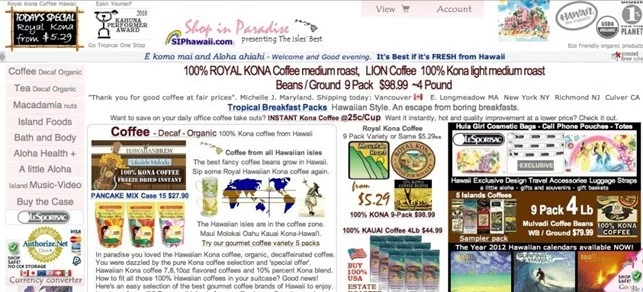List of content you will read in this article:
If you’re reading this post, most likely you’re also having trouble getting traffic to your blogs. We would all love to have as many people as possible reading our blogposts without us focusing our efforts towards attracting them, but in reality, without working on building an audience, it is difficult to get high traffic flow to your websites.
Importance of Blog Traffic
Blog traffic is an essential aspect of running a successful blog. It refers to the number of visitors your blog receives, and it is crucial for several reasons:
-
Increased Visibility: With more traffic to your blog, you have a higher chance of getting your content in front of a larger audience. This can lead to increased brand awareness and potentially more business opportunities.
-
Higher Rankings: One of the things search engines use to decide how to rank a website is how many people visit it.More traffic to your blog can help improve your search engine ranking, making it easier for people to find it.
-
Monetization: If you're running a blog for business purposes, more traffic can translate to more revenue through advertising, sponsorships, and other monetization methods.
-
Feedback and Engagement: More visitors to your blog mean more engagement and feedback from your audience. This can help you figure out what your readers want and need, which will let you make better content.
So, how do we get more traffic to our blogs?
12 Expert Tips Boost Your Blog Traffic
Here is a list of 12 tips that are guaranteed to get you a larger user base.
1. Evergreen content is the way to go
Evergreen content is the type of content that lives on the internet forever without time influencing it. Find out the recurring topics that people would always need help with and target them. For example, “how to increase blog traffic” is an extremely common topic. Another thing to look forward to is that the evergreen topics are given priority on search engines.
2. Awesome topics get awesome traffic
The first thing both the reader and the search engines see is the title of the article. This is in one way the most important part of the content because if people will not like the title, no matter how good the content is they won’t read it. The headline is what captures their interest, and this brings the flow of visitors.
People are often driven to listed posts so try to include numbers in your headline.
3. Be fresh and post constantly
If you update your website with fresh content more often, the higher the chances of receiving more traffic. Google gives higher priority to websites with fresh content, so our advice is to at least update your site once a week. Once you slow down and not so much ‘fire’ in your posts, people will naturally assume you have backed out. Do not let it happen.
4. Target the long-tail keywords
What are long-tail keywords? These are the keyword phrases that consist of more than three keywords. These types of keywords are easier to target due to less competition and this will give you to appear on Google's SERP (search engine result page).
Let us take the example ‘best games’ keyword. This is a very common keyword however if you target “best games in 2020” will have higher traffic as this relates to what people directly search for.
5. Include photos in your blogs
In order to boost the readership, it’s better to include a photo or two in your blogs. Having some visual cues is better for the reader as it makes the most visually appealing. Another benefit is to include keywords in the alt image tag and in the photo name itself which will boost the SEO for your site. Be vary to not take random images from Google due to copyright laws, our suggestion is to use royalty-free images from pexels, unsplash, or any sites which provide royalty-free images.
6. Write better Meta descriptions
The meta description is the information beneath the links of search results on the SERP. This is a couple of sentences that gives the searcher an idea of what the website contains. The key to meta descriptions is to persuade the person to enter the website. Keep it short, precise, and without misleading information. Keep the meta description within 150 characters and check what Google has to say about it.
7. Integrate the keyword in your URL
The URL contains the information which takes a visitor to the unique location of the website. The search engines have the ability to read URLs. So, using the targeted keywords in the URL will enable search engines to target your site even faster. Also, populating your article with the targeted keywords will give you a higher chance of showing up in the SERPs.
8. Include the keywords in your articles
It is crucial to include words that the users might search for in your article, however jamming words that will not make sense with the article will not work. The words that will turn up as results on the SERPs should be what you should include while maintaining the quality of the article.
In order to perfectly optimize the blog post, shower the keywords in the title, meta description, headings, URLs, and paragraphs. Keep in mind not to use the same keyword over and over again. Better to use synonyms of the primary keyword.
9. Keep it neat and tidy
Nobody likes to see or be in a messy unorganized place and this applies to your blogs. Keep it neat having everything in the right place. Nobody wants to see something like this:

Keep the following in mind when writing your articles:
- Use subheadings
- Use bullet/numbered list
- Space out the paragraphs
- Include pictures at the right place
Keep your article neat and tidy providing an easier read for your visitors which in turn will reduce bounce rates.
10. Include links Internal/Backlinks
Once you get someone to your blog, your aim should be for them to stay on the website and always come back for more. Casually include links to guide them further into your website, to older blog posts that make the reader wanting more. This includes views to your blogs and increases traffic in general. Wikipedia is really good at using this throughout its site.
While adding links to your old blogs, it is always nice to include links to other company’s products or services in your blog posts. Not only does Google like to see outbound links, but the other company might also mention your posts and link back to you. Backlinks are a ranking factor from Google when it comes to showing at the top of the SERP. Readers also appreciate it when there are resources to make it easier for them to find exactly what they are looking for.
11. Add Videos
As you know (if not well now you do) Google owns YouTube, which means that a lot of traffic can be generated. If you integrate short videos which summarize the written content both informative and entertaining will definitely increase the traffic.
12. Social Media
Everyone using the cyber-space has at least one social media account. This is where they see everything that goes on in the outside world and interact with other people from the safety of their profiles. Promoting your articles on social media is the best way to get interested parties to come to your doorstep. Once an interested person sees it they are bound to click it which brings the traffic higher.
Conclusion
Following the above tips will surely guarantee an inflow of traffic to your site. It is always best to create evergreen content so that it will live on for decades educating people throughout. However, the most important part of maintaining a blog is to upload quality content with the intent of educating people and helping the global community. The majority of the organic search results (non-paid) are blog posts (about 75%). Enjoy writing your blogs and do not forget to have fun with them.

I'm fascinated by the IT world and how the 1's and 0's work. While I venture into the world of Technology, I try to share what I know in the simplest way with you. Not a fan of coffee, a travel addict, and a self-accredited 'master chef'.